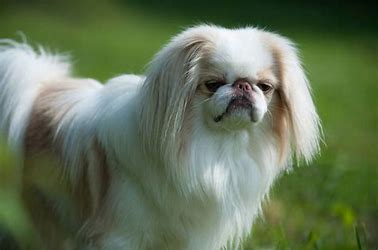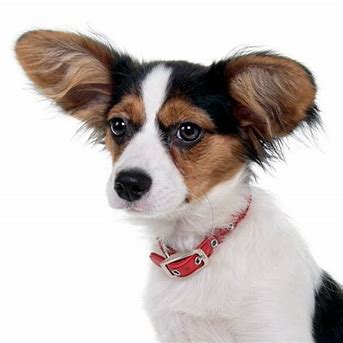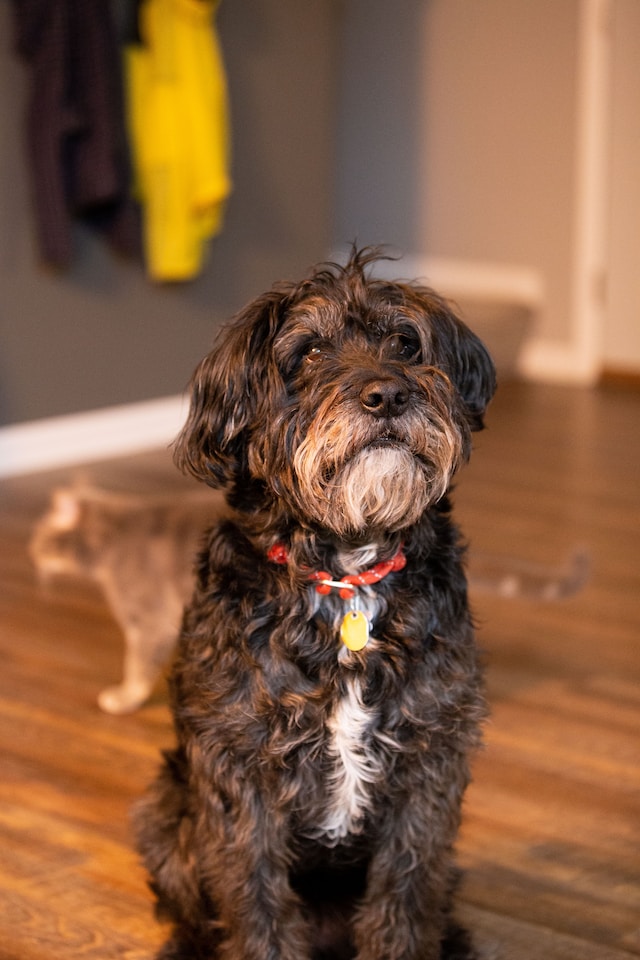Discovering the Beauty of Asian Dog Breeds (2023 Edition)

Are you interested in learning about Asian dog breeds? Asian dog breeds are known for their unique characteristics, rich history, and close bond with humans. From the loyal and protective Akita to the playful and intelligent Shiba Inu, there is a wide variety of Asian dog breeds to discover.
In this article, we will explore the fascinating world of Asian dog breeds. We will delve into their origins, physical traits, temperaments, and popular uses throughout history. Whether you are a dog enthusiast or simply curious about these beloved companions, this article will provide an insightful overview of Asian dog breeds.
Distinctive Characteristics of Asian Dog Breeds
- Akita: Known for their loyalty, Akita dogs are strong and powerful with a double coat.
- Pug: Originating from China, pugs have a distinct wrinkled face and curly tail.
- Shiba Inu: A small and agile breed from Japan, Shiba Inus are known for their fox-like appearance and spirited personality.
- Chow Chow: With their fluffy mane and blue-black tongue, Chow Chows are a unique breed originating from China.
- Tibetan Mastiff: This large and majestic breed from Tibet is known for its thick coat and protective nature.
- Afghan Hound: With its long and silky hair, Afghan Hounds are known for their elegance and graceful movement.
- Pekingese: These small and fluffy dogs from China have a distinctive flat face and luxurious mane.
- Shih Tzu: Originating from China, Shih Tzus are known for their long, flowing hair and friendly temperament.
- American Eskimo Dog: Despite its name, the American Eskimo Dog has roots in Germany. They have a thick white coat and a lively personality.
- Siberian Husky: Originally bred in Northeast Asia, Siberian Huskies are well-known for their striking blue or multicolored eyes and their ability to withstand cold climates.
These are just a few examples of the distinctive characteristics of Asian dog breeds. Each breed has its own unique traits and history, making them a fascinating part of the canine world.
Popular Asian Dog Breeds
Shiba Inu
The Shiba Inu is a small and agile breed native to Japan. Known for their spirited personality, these dogs are bold, independent, and make excellent companions. They have a distinct fox-like appearance with their thick coat, curled tail, and alert expression. Shiba Inus are intelligent and require consistent training and socialization to thrive.
Pomeranian
Originally from the Pomerania region in Germany, the Pomeranian is a toy breed that has gained popularity in Asia. These fluffy dogs are characterized by their profuse double coat, fox-like face, and small size. Pomeranians are lively and confident, often forming strong bonds with their owners. They are known for their intelligence and need mental stimulation to prevent boredom.
Akita Inu
The Akita Inu is a powerful and dignified breed originating from Japan. With their large size and thick double coat, Akitas are striking in appearance. They are known for their loyalty, bravery, and protective nature. While they can be reserved with strangers, Akitas are fiercely devoted to their families and require strong leadership and socialization from an early age.
Shih Tzu
The Shih Tzu is a small and affectionate breed with ancient origins in China. These dogs have a distinctive, long, and flowing coat, as well as a friendly and outgoing personality. Shih Tzus are known for their gentle and loving nature, making them wonderful family pets. They thrive on companionship and require regular grooming to maintain their luxurious coat.
Pekingese
The Pekingese is a small toy breed that originated in China. These dogs have a stocky build, a distinctive flat face, and a profuse double coat that requires regular grooming. Pekingese are known for their regal and dignified attitudes. While independent and sometimes stubborn, they are also devoted and loyal to their families. Training should be firm yet gentle to suit their sensitive nature.
History and Origins of Asian Dog Breeds
Asian dog breeds have a rich history and fascinating origins that span centuries. These breeds have been bred for various purposes, such as hunting, guarding, herding, and companionship. Let’s delve into the captivating past of some popular Asian dog breeds.
1. Shiba Inu: The Shiba Inu is one of the oldest and smallest native Japanese breeds. It is believed to have descended from ancient Japanese hunting dogs. Shiba Inus were primarily used for hunting small game in mountainous regions of Japan. Today, they are cherished companions known for their spirited personality and loyalty.
2. Akita: The Akita is a powerful and noble breed that originated in the mountainous regions of northern Japan. They were originally developed to hunt larger game, such as bears and boars. Akitas gained international attention when Hachiko, a loyal Akita, famously waited for his deceased owner at a train station for years. They are now revered for their courage, loyalty, and protective nature.
3. Pekingese: The Pekingese is an ancient toy breed that originated in China over 2,000 years ago. They were prized companions of Chinese royalty and were considered sacred. Pekingese dogs were believed to bring good fortune and were often kept in the imperial palace. Their distinctive appearance, including a flat face and a luxurious mane-like coat, adds to their charm and elegance.
4. Shar-Pei: The Shar-Pei is a unique breed with a wrinkled and loose skin. Its origins can be traced back to ancient China, where Shar-Peis were used as working dogs for various tasks, such as hunting, herding, and guarding. The breed nearly faced extinction in the mid-20th century but has since made a remarkable comeback. Shar-Peis are known for their loyalty, independence, and protective nature.
5. Shih Tzu: The Shih Tzu is a small and affectionate breed that originated in Tibet and later gained popularity in China. They were highly esteemed as companion dogs by Chinese royalty. Shih Tzus were selectively bred for their charming personality and beautiful coats. These dogs are known for their friendly and outgoing nature, making them lovable family pets.
Asian dog breeds have captivated dog enthusiasts worldwide with their unique characteristics and fascinating histories. Whether you’re drawn to the courage of the Akita, the spirited nature of the Shiba Inu, or the regal charm of the Pekingese, Asian dog breeds offer a diverse array of options for canine companionship.
Training and Socialization for Asian Dog Breeds
Importance of Training for Asian Dog Breeds
Training is crucial for Asian dog breeds to ensure they become well-behaved, obedient, and sociable companions. These breeds often have unique characteristics and temperaments that may require specialized training techniques. Proper training helps establish boundaries, teaches essential commands, and promotes good behavior, making daily interactions and outings more enjoyable for both the dog and their owner.
Socialization for Asian Dog Breeds
Socialization is an essential aspect of raising Asian dog breeds to ensure they are comfortable and confident in various environments and around different people and animals. Early socialization exposes the dog to different sights, sounds, smells, and experiences, helping them develop appropriate social skills and reduce the likelihood of fear or aggression. Regular socialization activities, such as puppy classes, playdates, and controlled introductions, play a vital role in molding a well-rounded and socially adept dog.
Tips for Training and Socializing Asian Dog Breeds
Training and socializing Asian dog breeds can be rewarding but may require some specific considerations. Here are some tips to help guide the training and socialization process for these breeds:
- Start early: Begin training and socialization during the puppy stage to establish positive behaviors and prevent potential issues.
- Consistency: Use consistent training methods, commands, and reinforcement techniques to provide clear expectations and facilitate learning.
- Reward-based training: Utilize positive reinforcement techniques, such as treats, praise, and rewards, to motivate and encourage desired behaviors.
- Exposure to various environments: Introduce Asian dog breeds to different environments, such as parks, busy streets, and crowded areas, gradually and in a controlled manner.
- Gradual introductions: Introduce the dog to new people, animals, and situations slowly to build confidence and positive associations.
- Seek professional help if needed: Consider enrolling in obedience classes or consulting a professional dog trainer experienced with Asian dog breeds for additional guidance.
With proper training and socialization, Asian dog breeds can thrive as well-mannered and sociable pets, forming strong bonds with their families while also being respectful members of the community.
Exercise and Activity Requirements of Asian Dog Breeds
Asian dog breeds are known for their unique characteristics and temperaments, which often influence their exercise and activity requirements. While each breed has its specific needs, it’s essential to provide sufficient physical and mental stimulation to keep them happy and healthy. Understanding their exercise requirements can help ensure a fulfilling and well-balanced lifestyle for your Asian dog breed.
Asian dog breeds, such as the Shiba Inu, Akita, Chow Chow, and Tibetan Mastiff, often possess a strong independent nature and high energy levels. They may require regular exercise to prevent boredom and potential behavior issues. Engaging in physical activities allows them to expend energy and provides mental stimulation, contributing to their overall well-being.
Daily exercise routines should include a mix of cardiovascular activities and mental challenges. This can include brisk walks, jogging, hiking, or playing interactive games like fetch or hide-and-seek. Incorporating training sessions, obedience exercises, or puzzle toys can also engage their minds and help prevent boredom.
It’s important to note that the exercise needs of Asian dog breeds can vary based on factors such as age, health, and individual tendencies. Puppies may have shorter bursts of energy and require more frequent play and exercise sessions. Older dogs may have lower energy levels and may benefit from moderate exercise and mental stimulation tailored to their capabilities. Consulting with a veterinarian or professional dog trainer can provide specific guidance based on your dog’s needs.
Remember to consider their temperament and sensitivity to weather conditions. Some Asian dog breeds may be more prone to heat intolerance, while others may tolerate colder climates better. Adjust exercise routines accordingly, ensuring they have access to shade, water, and appropriate protection during extreme conditions.
Consistency and dedication to regular exercise are key to ensuring the happiness and well-being of Asian dog breeds. Meeting their exercise requirements not only provides physical and mental benefits but also strengthens the bond between you and your furry companion. By incorporating exercise and mental stimulation into their daily routine, you can help these beautiful Asian dog breeds thrive and lead a fulfilling life.
Grooming Needs for Asian Dog Breeds
Asian dog breeds are known for their unique and beautiful appearances, which often require specific grooming techniques and maintenance. Whether you own a Shih Tzu, Akita, Chow Chow, or any other Asian breed, it’s important to understand their grooming needs to keep them looking their best and maintain their overall health and well-being.
Here are some important factors to consider when it comes to grooming Asian dog breeds:
- Double Coats: Many Asian dog breeds have thick double coats that require regular brushing to prevent matting and remove loose fur. Invest in a high-quality brush suitable for your dog’s coat type and establish a regular brushing routine.
- Excessive Shedding: Some Asian breeds, like the Akita, may have heavy shedding seasons. Be prepared for increased shedding during these times and be diligent in regular brushing to help manage the shedding.
- Facial Wrinkles: Breeds such as the Shar Pei or Bulldog may have facial wrinkles that require special attention. Keep these areas clean and dry to prevent skin irritation or infections. Regularly check and gently clean the wrinkles with a damp cloth or specialized products recommended by your veterinarian.
- Ear Cleaning: Asian breeds with folded or pendulous ears, like the Shih Tzu or Pekingese, may be prone to ear infections. Regularly inspect their ears for redness, foul odor, or excessive wax buildup. Clean their ears with a veterinarian-approved cleanser as instructed.
- Nail Care: Regular nail trimming is important for all dogs, including Asian breeds. Overgrown nails can cause discomfort or difficulty in walking. Get familiar with the proper technique or seek assistance from a professional groomer or veterinarian.
- Professional Grooming: Depending on your dog’s coat type and specific needs, professional grooming may be recommended. Consult experienced groomers familiar with Asian dog breeds to ensure your dog receives the appropriate grooming services, such as trims, haircuts, or styling.
Remember to always approach grooming sessions with patience and positivity. Make grooming a positive experience for your dog by offering treats, praise, and plenty of love. Regular grooming not only helps your Asian dog breed look their best but also strengthens the bond between you and your furry companion.
Health Issues Commonly Seen in Asian Dog Breeds
Brachycephalic Respiratory Syndrome
Brachycephalic dog breeds, such as Bulldogs, Pugs, and Shih Tzus, are prone to respiratory issues due to their shortened, flattened faces. This syndrome can cause breathing difficulties, snoring, and snorting, and may require medical intervention or surgery in severe cases.
Patellar Luxation
Patellar luxation is a common orthopedic condition seen in Asian dog breeds like Shih Tzus, Pomeranians, and Japanese Chins. It occurs when the kneecap (patella) dislocates from its normal position, leading to lameness, difficulty walking, and joint instability. Surgical correction may be necessary to alleviate symptoms and improve mobility.
Dental Issues
Asian dog breeds, including Pekingese, Chow Chows, and Tibetan Spaniels, often have dental problems. Their flat faces and crowded teeth make them more susceptible to dental issues like overcrowding, misalignment, and periodontal disease. Regular dental care, including brushing and professional cleanings, is essential to maintain their oral health.
Eye Problems
Certain Asian dog breeds, such as Shih Tzus, Lhasa Apsos, and Pekingese, are prone to various eye problems. These may include corneal ulcers, dry eye (keratoconjunctivitis sicca), and progressive retinal atrophy. Regular eye examinations, proper grooming, and early intervention can help manage these conditions and prevent vision loss.
Digestive Sensitivities
Asian dog breeds like Shiba Inus, Japanese Chins, and Chow Chows can have sensitive digestive systems. They may be more prone to food allergies, inflammatory bowel disease, and gastrointestinal issues. A balanced diet, appropriate nutrition, and avoiding trigger ingredients can help minimize digestive problems and promote overall well-being.
Finding a Reputable Breeder or Adoption Center for Asian Dog Breeds
If you are interested in owning an Asian dog breed, it’s important to find a reputable breeder or adoption center. This ensures that you get a healthy and well-cared for dog while supporting responsible breeding practices. Here are some tips to help you find a reputable source for your Asian dog breed:
1. Do your research: Start by researching the specific breed you are interested in. Learn about their characteristics, temperament, and any potential health issues. This will help you make an informed decision and find a breeder or adoption center that specializes in that particular breed.
2. Ask for recommendations: Reach out to other dog owners or breed enthusiasts who have Asian dog breeds. They may be able to recommend reputable breeders or adoption centers based on their own experiences.
3. Visit the facilities: If possible, visit the breeder or adoption center in person. This allows you to see the conditions in which the dogs are kept and evaluate the overall cleanliness and care provided. Observe how the dogs interact with the staff and other animals to get a sense of their temperament and socialization.
4. Ask for health clearances: Reputable breeders will typically provide health clearances for their dogs. This includes documentation from a veterinarian that the dog has been screened for any genetic or hereditary health conditions common to the breed.
5. Check for registrations: Verify if the breeder is registered with a recognized kennel club or breed association. This ensures that they adhere to certain standards and codes of ethics in their breeding practices.
6. Request references: Ask the breeder or adoption center for references from previous buyers. Reach out to these references to inquire about their experience with the breeder or adoption center and the overall health and temperament of the dog they have purchased.
7. Consider adoption: Adoption can be a rewarding option, especially if you are willing to provide a loving home to a dog in need. Contact local animal shelters or rescue organizations to inquire about any Asian dog breeds available for adoption. These dogs often come with basic training and may already be spayed or neutered.
Finding a reputable breeder or adoption center is essential to ensure that you bring a healthy and happy Asian dog breed into your home. Take the time to research and visit multiple sources before making a decision. Remember, responsible breeders and adoption centers prioritize the well-being of their dogs and are committed to producing and placing them in loving homes.
Conclusion
Asian dog breeds offer a unique and fascinating addition to the canine world. From the loyalty of the Akita to the spirited nature of the Shiba Inu, each breed has its own distinctive characteristics and history. However, it’s important to note that these breeds can also be prone to certain health issues, such as respiratory problems in brachycephalic breeds and dental issues in flat-faced breeds.
When considering an Asian dog breed, it’s crucial to find a reputable breeder or adoption center. By doing your research, visiting the facilities, and asking for health clearances and references, you can ensure that you are getting a healthy and well-cared for dog. Adoption is also a wonderful option, as it provides a loving home for a dog in need.
Once you bring your Asian dog breed home, proper training, socialization, exercise, grooming, and regular veterinary care are essential to their well-being. These breeds thrive with consistent routines, mental stimulation, and social interaction.
By understanding the unique characteristics and needs of Asian dog breeds, you can provide the best care for your furry companion and enjoy a fulfilling and rewarding relationship.







Модные заметки по созданию стильных луков на любой день.
Заметки экспертов, события, все новинки и мероприятия.
https://ekbtoday.ru/news/2024-09-10-demna-gvasaliya-pereosmyslyaya-modu/